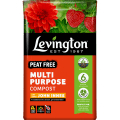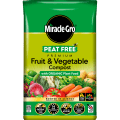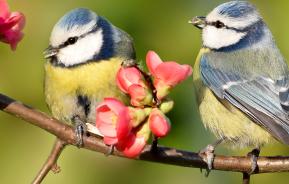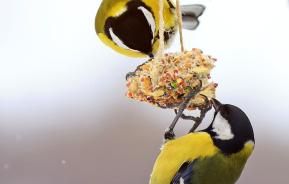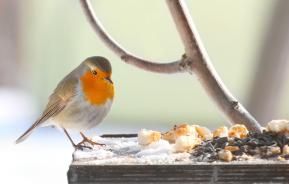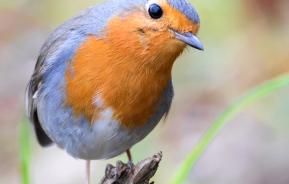Location and species are both very important factors in determining what food a bird eats, and they are just some of the things to consider when attracting birds to your garden. The location will contribute to the types of food sources available, whilst the species of bird creates a variance in diet due to differences in size, strength, ability and needs.
The majority of species can be sorted into categories based upon their primary food source. These are really good to keep in mind when thinking about what birds you want to see in your garden.
If you are thinking about feeding birds this winter, you should think about either buying or making your own bird feeder.
Carnivorous
This describes the birds whose diet consists mostly of eating meat, such as rodents, mammals, fish, insects, birds, amphibians and reptiles. The food is obtained either through hunting or scavenging, with many birds choosing to go for prey which is convenient or easy to catch. Birds of prey including hawks, falcons, eagles, osprey, vultures and owls are known as carnivores, as well as some species of shorebird, corvids and wading birds.
Carnivorous is a term used for any general meat diet, however, there are specific terms for diets where primarily one type of meat is consumed. These include:
Piscivorous
This describes birds whose diet consists largely of fish, but can also include other food sources such as aquatic insects, molluscs and crustaceans. Many birds in this category have specialized bills and strong talons to assist them with capturing their prey. Some bird species that can be classed as piscivorous include osprey, terns, cormorants, albatrosses and penguins. Herons, pelicans and gulls are also considered partially piscivorous.
Insectivorous
This term describes the diet for a wide variety of birds and consists primarily of eating insects. These can include aquatic insects, flying insects, ants, spiders, grasshoppers, caterpillars, dragonflies, butterflies and many more. These insects are a critical source of protein for most birds and especially growing nestlings.
There are many birds that are considered to be insectivorous, although they do not exclusively eat insects their diets contain a large proportion of them. For some species, it is necessary to adapt their insectivorous diet due to the availability of food sources in different seasons. Birds that are primarily insectivorous throughout their lives include bluebirds, dippers, flycatchers, swallows, warblers, woodpeckers and wrens.
Avivorous
This describes birds whose diet consists mostly of eating smaller birds. Both large and small birds of prey eat smaller birds and are considered as having an avivorous diet, whilst others will occasionally feed on birds if their normal prey is scarce and birds are widely available. Avivorous birds are agile fliers with strong legs and talons in order to catch their prey. These can include peregrine falcons and hawks.
Molluscivorous
This describes birds whose diet consists of eating a high proportion of molluscs, such as snails, oysters, clams and slugs. Many molluscivorous shorebirds have specially shaped, sharp bills and strong jaws to assist in finding and capturing prey. Birds that are molluscivorous include oystercatchers and kites, and occasionally ducks, coots, dippers and spoonbills.
Ophiophagous
This describes a bird whose diet consists largely of snakes. There are only a few select species of bird foreign to the UK that is ophiophagous such as the secretary bird and the family of snake eagles. Both of which have fast reflexes and sharp talons to capture the snakes. There are many other birds that will occasionally consume small snakes including herons and corvids.
Frugivorous
This describes birds whose diet consists mostly of fruit such as bananas, apples, pears, oranges and also some berries. These birds often have special bills to assist in efficiently cutting into the fruit and removing the skin. Waxwings are a frugivorous bird along with blackbirds, thrushes, starlings and many other birds also enjoying small quantities of fruit. These are birds that we have a great ability to help in our gardens.
Granivorous
This describes a bird whose diet consists primarily of feeding on seeds and grain. Larger birds having thick strong bills to crack shells open and smaller birds having thinly tipped bills for prying seeds from pine cones and flowers. Many granivorous birds will also consume some insects as a necessary source of protein. Common types of granivorous birds include game birds, sparrows and finches.
Mucivorous
This describes birds whose diet consists mainly of plant juices or sap. This provides a good energy source and is often preferred by large woodpeckers who will drill holes into trees to access the sap. Many other birds will then feed on the sap filled hole created by the woodpecker such as hummingbirds, waxwings and some warblers.
Nectivorous
This describes a bird whose diet consists of a high percentage of nectar. Small quantities of fruit, insects and sap may also be consumed. These types of birds have specialized bills in order to gain access to and extract the nectar from nectar-producing flowers. The most well-known nectarivorous birds are the hummingbirds, but other species include honeycreepers and orioles.
Omnivorous
This describes many birds whose diet consists of both plants and animals. This can include a wide variety of food sources such as insects, fish, lizards, crustaceans, rodents, seeds, grain, grasses, nectar and fruit. The primary food source for omnivorous birds can vary throughout the seasons to adapt to whichever ones are most readily available. Most types of hummingbirds, ducks, woodpeckers and orioles are examples of omnivorous birds.
So there is not just one single food source that all birds eat, there is a very broad selection of them, varying depending on the size and species of bird and the environment that it inhabits. Once you have narrowed down the species then you can create a range of recipes and foods to cater for them.



